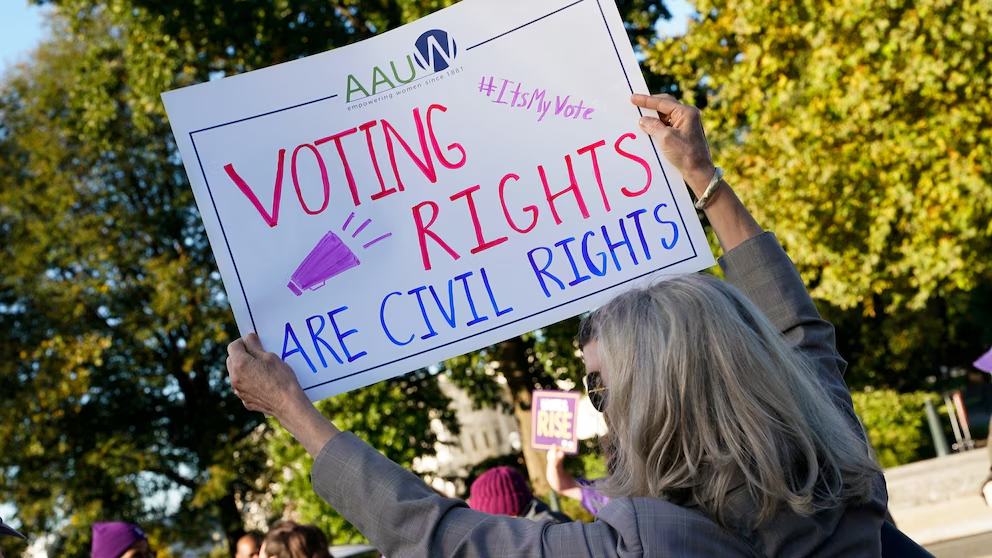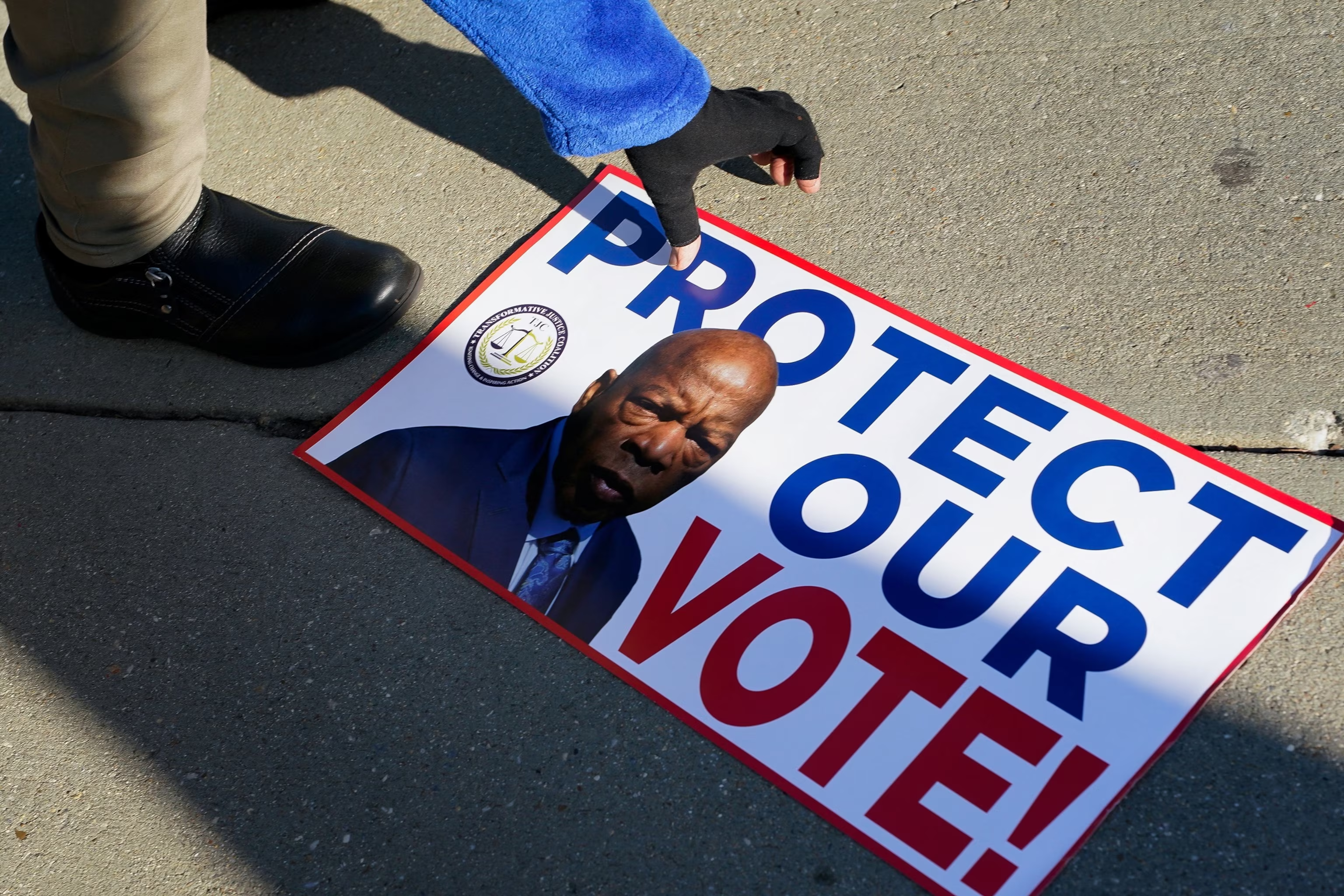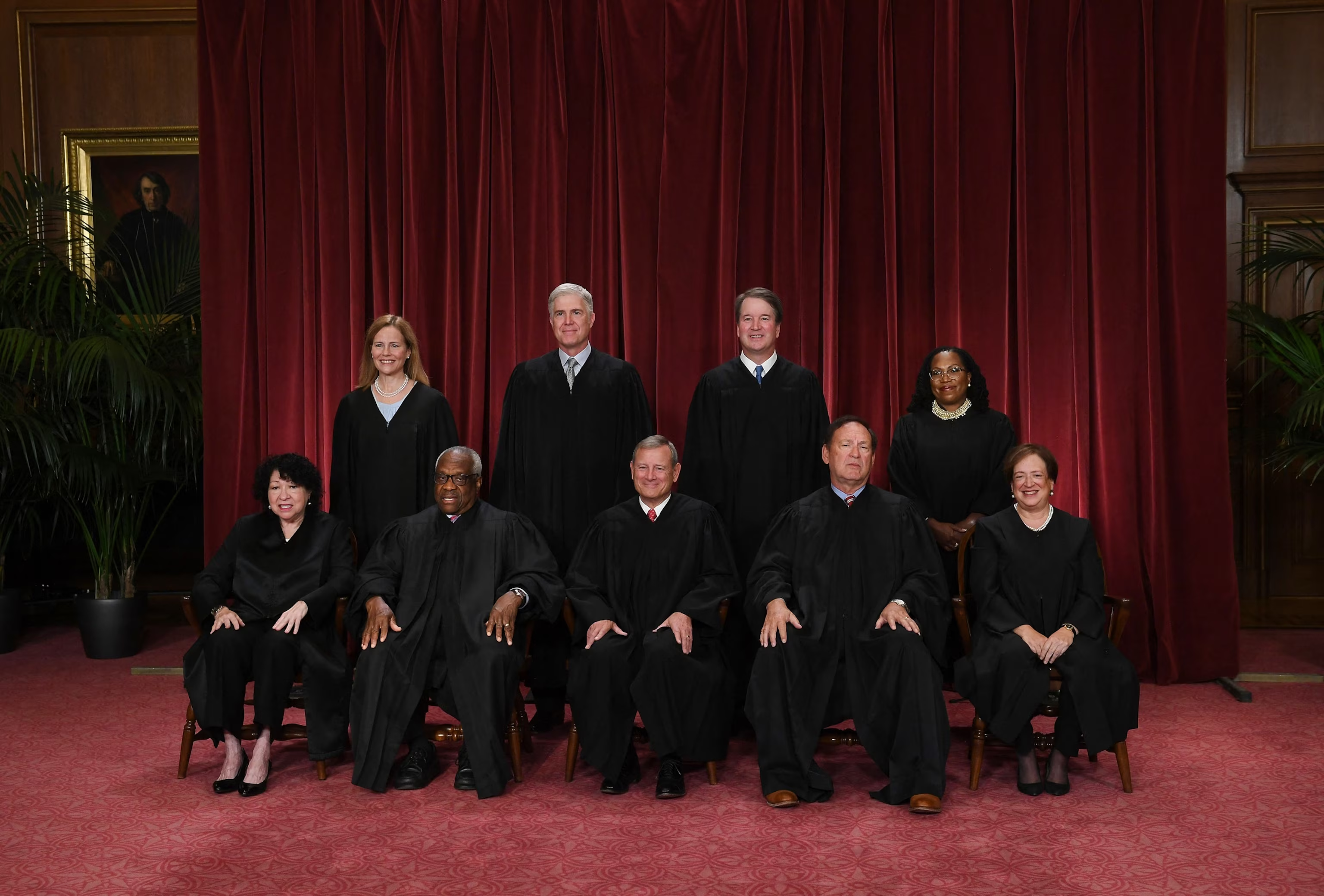
1:32Demonstrators gather on the day the U.S. High Court hears arguments concerning the makeup of Louisiana voting regions, in Washington, October 15, 2025.Elizabeth Frantz/Reuters
The High Court on Wednesday seemed poised to curtail how a crucial element of the Voting Rights Act, which has traditionally sought to safeguard equitable opportunities for voters from racial minorities, is implemented in the creation of state electoral boundaries.
During verbal discussions in a complex case disputing the formation of a second primarily Black district in Louisiana, the court’s conservative bloc hinted that race may have been unduly prominent as a consideration in its establishment.
Nonetheless, it remained unclear if a majority within the court was inclined to render a broader judgment asserting that any utilization of race as a factor in redistricting is unconstitutional.

People protest on the day the U.S. Supreme Court hears arguments regarding the composition of Louisiana electoral districts, in Washington, October 15, 2025.Elizabeth Frantz/Reuters
Section 2 of the Voting Rights Act has traditionally acted as a defense against states “consolidating” Black voters into certain districts and “dividing” communities of color into other districts with the intention of diminishing their electoral strength.
Courts that have determined a breach of Section 2 subsequently instruct states to revise their maps, taking race into account, to guarantee that minority voters are afforded a fair chance at political involvement.
The legislation does not necessitate evidence of intent to discriminate — forbidding any discrimination in practice — yet several conservative justices implied that plaintiffs should be required to demonstrate at a minimum some likelihood of intent, a more challenging benchmark to fulfill.
Justice Brett Kavanaugh, who could cast the pivotal vote in the case, conveyed specific apprehension regarding the ongoing application of race to craft maps compliant with Section 2.
"This court's rulings in various circumstances have stated that race-related remedies are acceptable for a period of time, occasionally for an extended duration, decades in some instances, but that they should not be unending and must have a conclusion," Kavanaugh stated.
"What is absent from legal precedent," Janai Nelson, president and director-counsel of the NAACP Legal Defense Fund, which is defending Louisiana’s map, responded, "is the notion that a whole statute should simply cease to exist purely because race might constitute an element of the resolution."

Justices of the Supreme Court pose for their official photo at the Supreme Court in Washington, D.C., Oct. 7, 2022. (Seated from left) Associate Justice Sonia Sotomayor, Associate Justice Clarence Thomas, Chief Justice John Roberts, Associate Justice Samuel Alito and Associate Justice Elena Kagan, (Standing behind from left) Associate Justice Amy Coney Barrett, Associate Justice Neil Gorsuch, Associate Justice Brett Kavanaugh and Associate Justice Ketanji Brown Jackson.Olivier Douliery/AFP via Getty Images
The court's established precedents have dictated that race cannot be the primary driving force when establishing congressional districts under the equal protection clause of the 14th Amendment, but they also allow states some flexibility to factor in race to abide by the Voting Rights Act.
The court most recently affirmed Section 2 in a 2023 ruling.
"What Section 2 accomplishes is to declare that where the impacts [of a congressional map] are discriminatory to the extent that… African Americans here are not being granted the same chances to vote as white individuals are, then a resolution is suitable," Justice Elena Kagan conveyed to Louisiana Solicitor General Benjamin Aguinaga. "That resolution does not have to be grounded in race, but sometimes it is race-related to rectify the racially biased situation that exists."
Justice Ketanji Brown Jackson most fervently supported the legacy of Section 2 and its application to establish two majority-Black districts in Louisiana, portraying the Civil Rights-era statute as a “mechanism” to pinpoint racial disparities.
“It's analogous to a measuring tool that we're utilizing to ascertain whether specific circumstances exist, and those circumstances that Congress is concerned about – unequal access to electoral prospects,” she explained. "This explains why it does not require a deadline, as its function is merely to guide us toward identifying areas where action may be necessary."
Justice Samuel Alito stated directly that he felt lower courts had not appropriately applied the Supreme Court precedents pertaining to Section 2 to the maps under discussion in Louisiana.
“There's a significant inquiry concerning whether the Black populace within the district being examined in the illustrative map possessed geographical unity,” he stated, referencing one of the legal stipulations for a VRA-compliant map.
A determination in Louisiana’s favor could, at the minimum, oblige the state to revise its map utilizing more race-impartial criteria prior to the 2026 midterm election. The two majority-black districts are represented by Democrats.
A more extensive conclusion in the matter could disrupt congressional maps on a nationwide scope, possibly instigating the revision of race-neutral districts across numerous states and consequently jeopardizing minority representation within legislatures across the country.
Nelson asserted that a further weakening of the Voting Rights Act would be "devastating."
"If we consider Louisiana as one example, every congressional member who is Black was chosen from a VRA opportunity district," she noted. "The diversity we observe throughout the south, for instance, is solely attributable to litigation that mandated the establishment of opportunity districts under the Voting Rights Act."
The court is anticipated to issue a ruling before the end of its term in June 2026. How swiftly it delivers its ruling might dictate if states will have ample time to revise maps — if deemed necessary — before the commencement of midterm voting.
Sourse: abcnews.go.com






